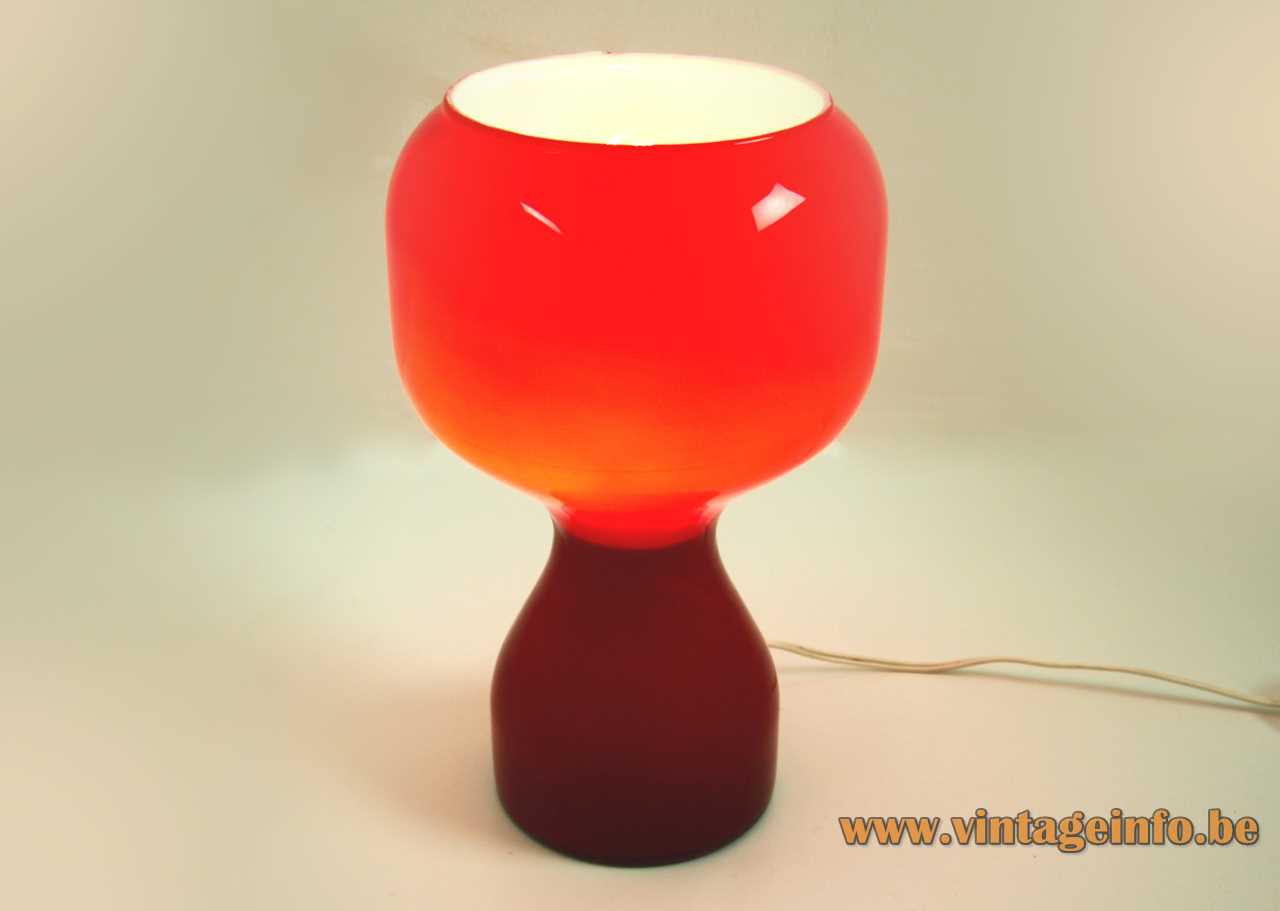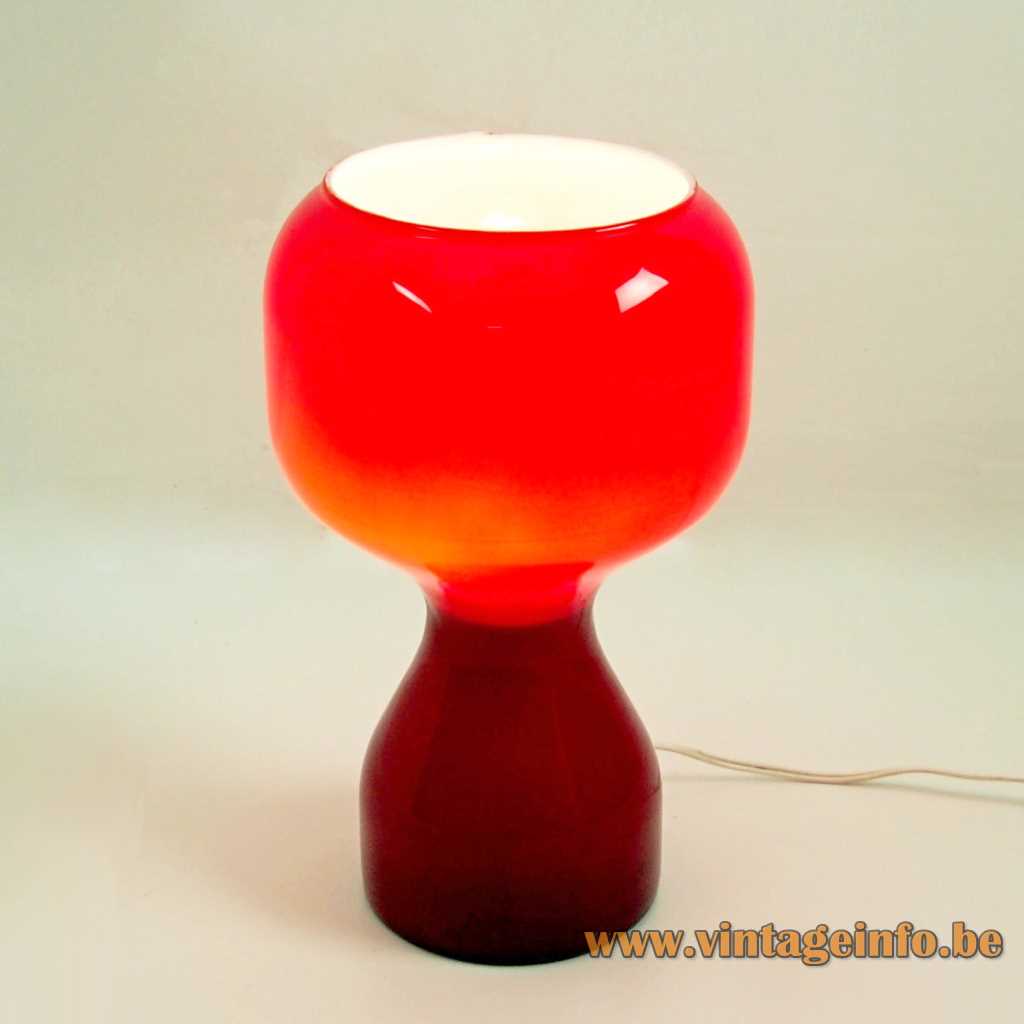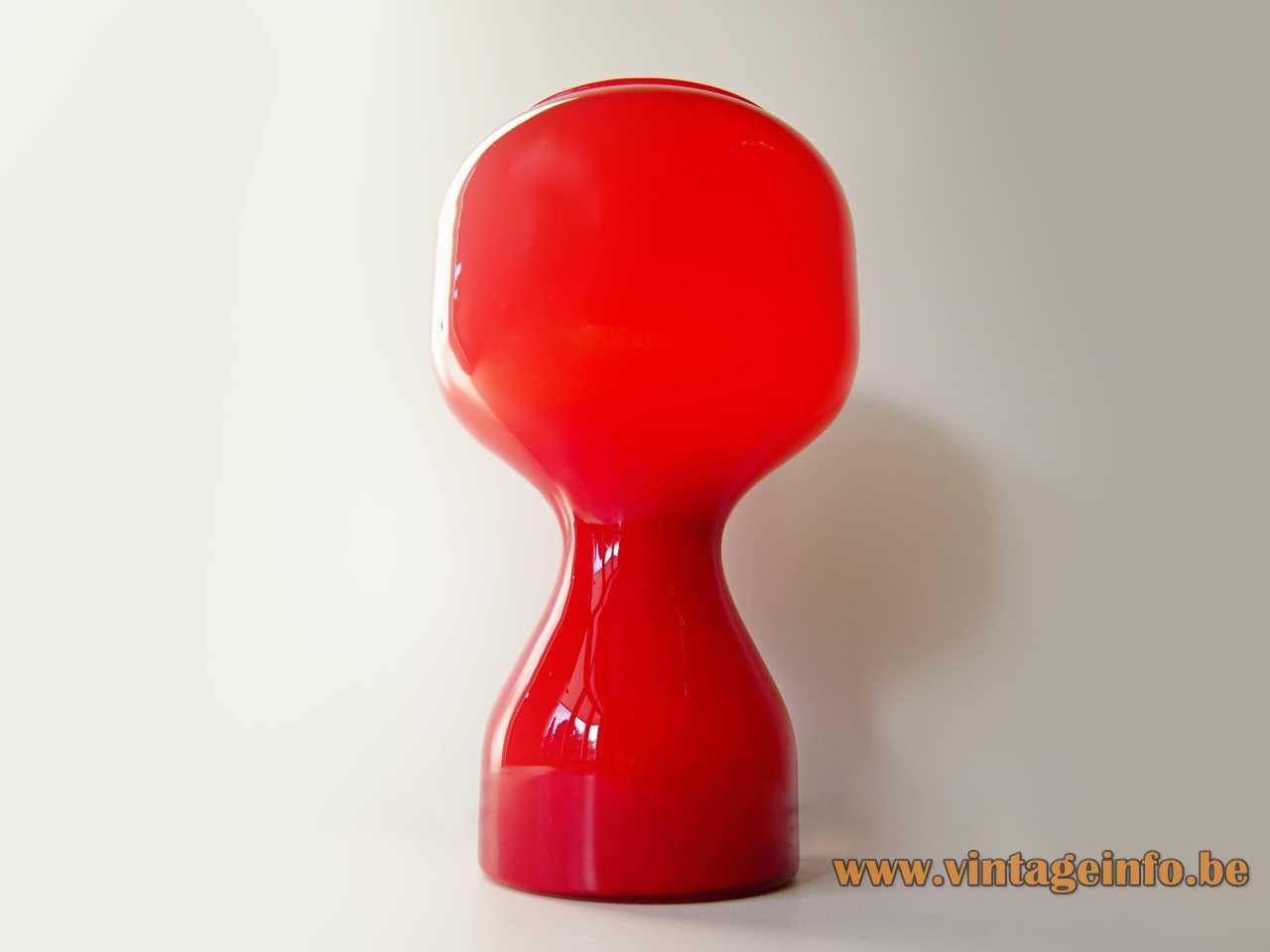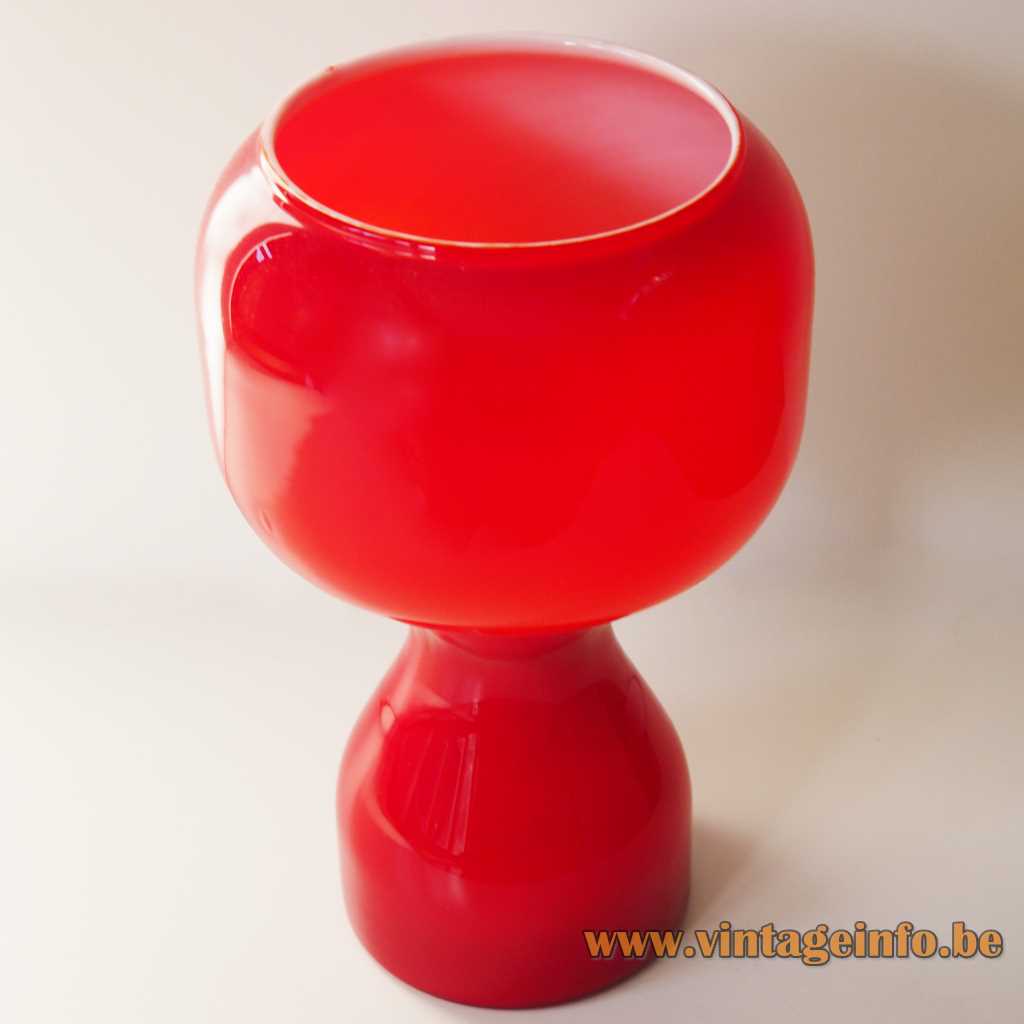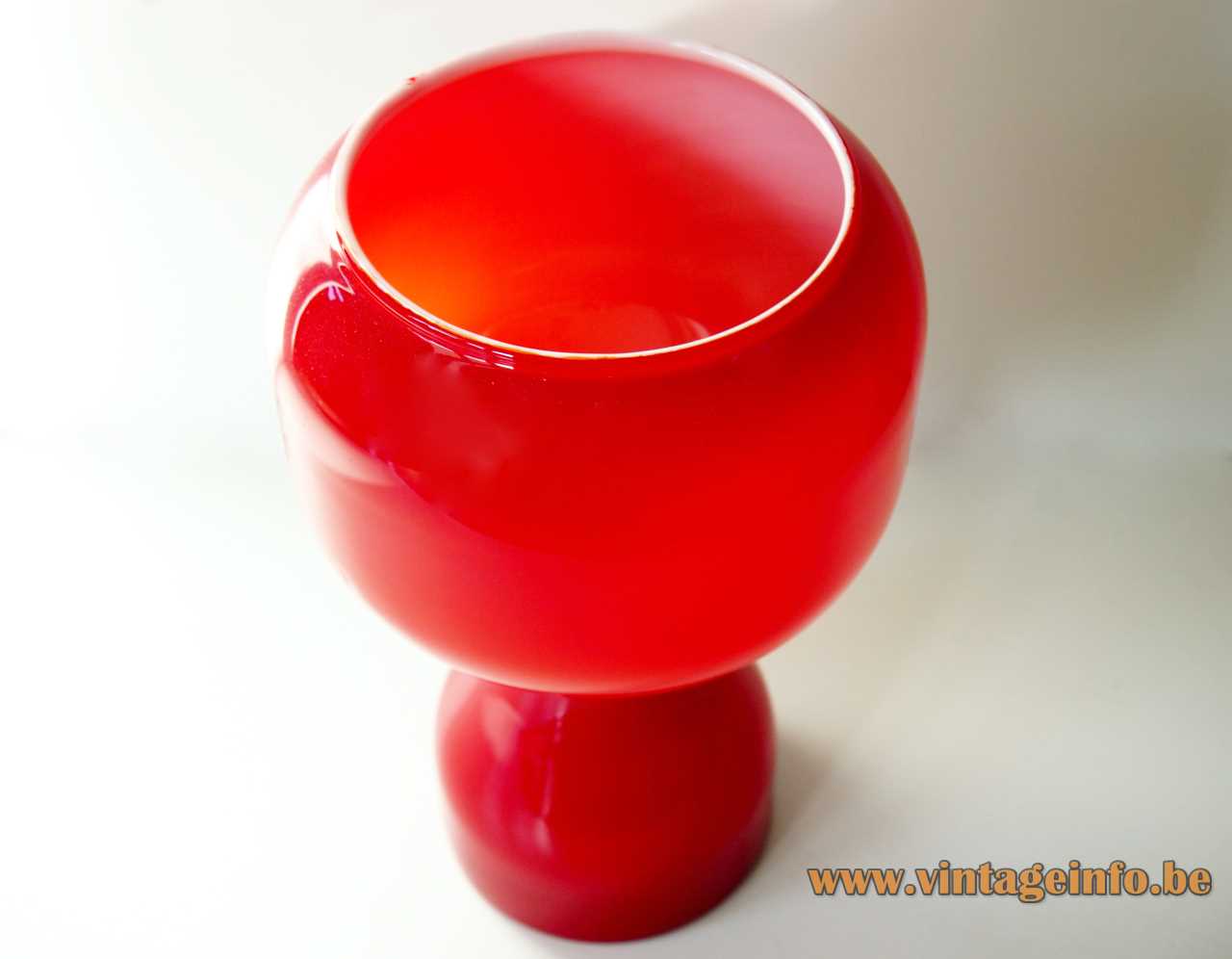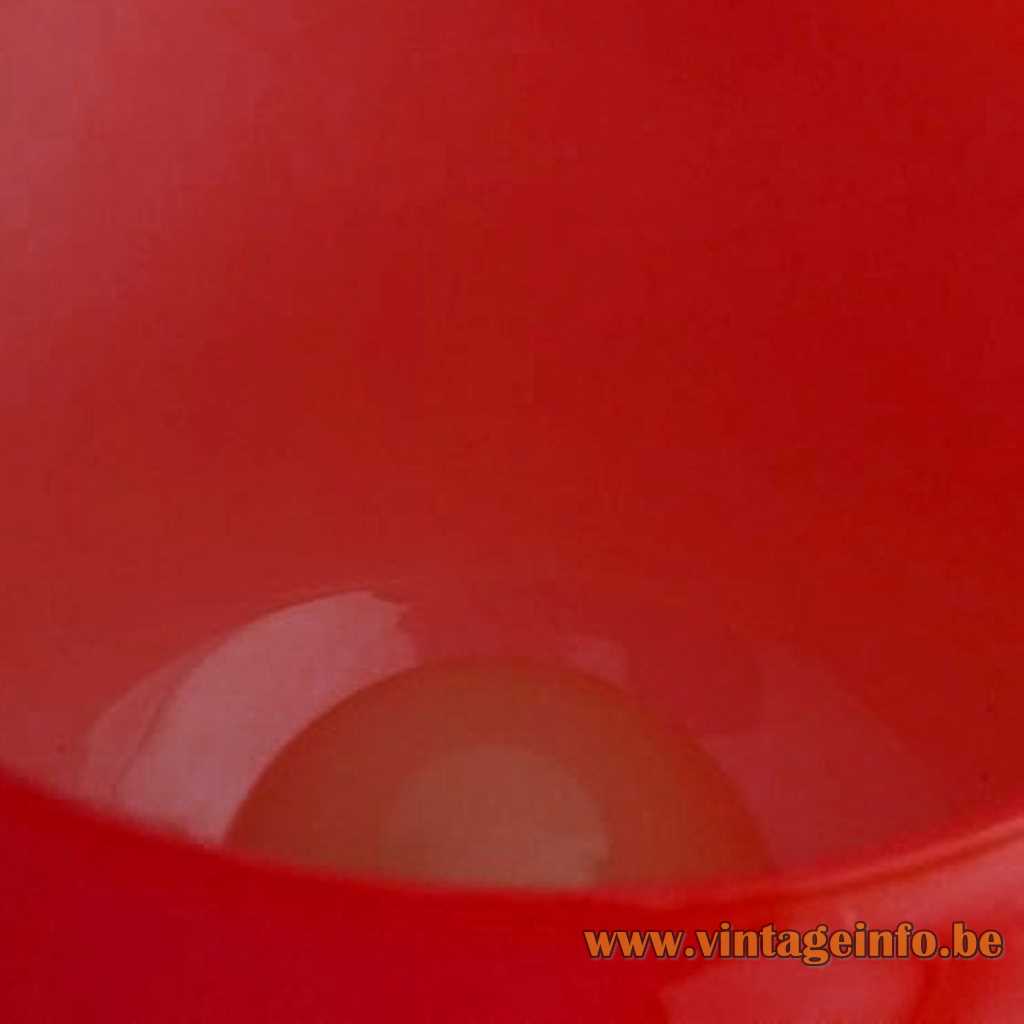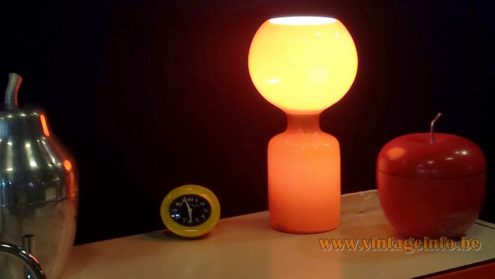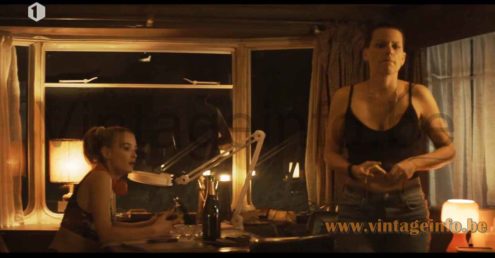Philips Tobrouk table lamp spotted on the Puces du Design fair in Paris, April 2018
Lamps in the movies
A 1970s Tahiti table lamp was used as a prop in the 2020 French-Flemish crime TV series Cheyenne & Lola. Starring Charlotte Le Bon, Veerle Baetens and Alban Lenoir. Filmed on location at the coast in Picardy in the north of France. Here together with a Barbier style table lamp and a lighthouse table lamp.
Echo
Links (external links open in a new window)
Echo – TV show – Wikipedia (in Dutch)
Boom glass – historical website (in Dutch)
The complete history of the Philips company on their website
The Evoluon building – Wikipedia
Website of the Philips Museum in Eindhoven
Cheyenne & Lola (2020) TV series – IMDb
Vintageinfo
Biography and many other lamps designed by the two brothers. Expo 1970 photos
Philips Tobrouk table lamp version 2
Lamps with glass from De Rupel
Bo-Niko white Bakelite wall lamp
Chrome And glass globes chandelier
Massive Belgium triple pendant lamp
Black And chromed metal table lamp
Many thanks to Ger for the beautiful pictures.
Many thanks to Herwig Sterckx and Fred for the enlightening information.
1970s Tahiti Table Lamp
Materials: Round base & lampshade made 1 piece of red glass, white on the inside. Brass or plastic rod and nut. Bakelite E27 socket.
Height: 27,5 cm / 10.62”
Width: ∅ 17,5 cm / 6.88”
Electricity: 1 bulb E27, 1 x 60 watt maximum, 110/220 volt.
Any type of light bulb can be used, but preferably a small white or frosted one.
Period: 1970s – Mid-Century Modern.
Designer: Herwig and Frank Sterckx (born 1948).
Manufacturer: Massive, Mortsel, Belgium.
Other versions: This 1970s Tahiti table lamp exists in many colours. Made in slight variations over the years. You also find them with a metal bottom plate.
It is always said that this lamp is made by Philips and that it is a design by Jean-Paul Emonds-Alt, but it is not. It also has no name. The Tahiti lamp is the German name of the Tobrouk lamp. In all probability they changed the name because Tobruk is a city in Libya were during World War II several battles were fought.
You never find these table lamps with a label of the Philips company. Sometimes a label of Massive is present. The glass for this lamp was made by De Rupel from Boom, Belgium. It was also produced as a vase.
Jean-Paul Emonds-Alt designed the Tobrouk lamp for Philips, a table lamp in the same style, as you can see.
Herwig and Frank Sterckx
Herwig and Frank Sterckx are graphic designers from Antwerp, Belgium. The twin brothers studied at the Koninklijke Academie voor Schone Kunsten van Antwerpen (Royal Academy of Fine Arts).
Their dad, Piet Sterckx was a journalist and he wrote an article for a newspaper about the Spanish glass blowers that worked in the glass factory in Boom, “N.V. Glasfabriek De Rupel” (Limited Liability Company Glass Factory De Rupel), named after the river that runs along the city.
The director of the glass factory asked him if he knew someone who could make modern designs. He first asked his sons that then studied at the academy in Antwerp. In the period 1968 – 1969, the duo designed a whole series of lamps for De Rupel. Al the lamps were hand blown in steel moulds. The test pieces were first blown into wooden moulds.
Herwig and Frank Sterckx, students at that time, never heard anything about production and were never paid for their work. The director died suddenly and the successor claimed not to believe in the modern direction.
Glasfabriek De Rupel
The glass factory was founded in 1923. De Rupel was led by Léon Boon, one of the 30 investors. Léon Boon was a butcher and due to back problems he was appointed chairman of the management board. The company produced many glass items. Chandeliers and parts for lamps were produced since the 1930s.
De Rupel was a glass producer, they did not commercialise the lighting themselves. The lamps were offered at trade fairs to lighting companies who added the wiring and included them in their sales range. They produced glass for companies such as Massive, Philips and Bo-Niko. Many lamps on Vintageinfo uses glass from De Rupel. Some examples can be found in the links.
The glass-works went bankrupt in 1975 after it merges with 3 other Belgian glass companies: Doyen, Boussu and Verreries Nouvelles de Manage (New Glass works of Manage). The fusion was without success. Glass production in Belgium became to expensive. De Rupel was the only factory that made a slight profit. The joint name was MANUVERBEL (Manufacture Belge du Verre – Belgian Glass Factory).
The company was sold by the Belgian government to the German company BEGA Gantenbrink-Leuchten, also owner of Glashütte Limburg and dismantled. The government wanted to recoup the overdue social security contributions.
Today the BOOM company produces outdoor lighting and is located in Puurs, Belgium. It is named BOOM Buitenverlichting NV (BOOM Outdoor Lighting Limited Liability Company).
Echo
In addition to designing, the twins also had a modest career on television, but with a major impact. At that time there was only 1 TV station, named the BRT, (Belgian Radio and TV) so everyone watched it.
They were a gimmick in the Echo show: the two guys with a ladder (De ladderdragers). Herwig and Frank Sterckx always just walked by and no further attention was paid to them. The program makers never gave any explanation, so the duo naturally started to intrigue.
On this page a fragment of the duo, recorded in Wetteren on March 14, 1969. The ladder of the two weird guys caught fire on the market and the fire brigade had to rush out…
Echo was a Flemish human interest program that was broadcast every week from 1961 to 1973. Around 8,400 mini-reports were made. The program was often awarded.
Massive
Origins and Early Growth (1926–1970s)
Massive started in 1926, when Pieter-Jozef De Jaeck founded a bronze foundry in Wilrijk, near Antwerp, Belgium. Initially, the company crafted traditional bronze items such as candlesticks, crucifixes, and chandeliers in-house using established casting methods.
However, as the market evolved during the 1930s and 1940s, Massive quickly adapted to meet changing consumer needs. Therefore, the company gradually introduced more functional lighting products for households. After World War II, electric lighting became more popular across Europe.
Consequently, Massive began combining classic design with modern electrical technology. This strategic shift enabled the brand to reach new customers and grow steadily.
By the 1950s, Massive had earned a solid reputation across Belgium. Its lighting fixtures – often inspired by mid-century trends – were both affordable and practical. Moreover, they were widely available in hardware and furniture stores. As a result, they became a staple in many homes.
In the 1960s, Eddy De Jaeck, the founder’s son, joined the company. He introduced semi-industrial production techniques and optimized logistics. As a result, Massive shifted from a craft-based workshop to a mass production business. This major change laid the groundwork for international expansion.
Design Approach and Product Strategy
Massive became known for producing lighting in the style of more exclusive brands. While they didn’t make direct copies, many of their designs were clearly “inspired” by well-known models. Nevertheless, the company also released some original highlights that stood out in their own right.
In addition to their own production, Massive distributed a significant number of lamps made by other manufacturers. This strategy was not unusual at the time. Many lighting companies across Europe followed the same practice to broaden their product range and appeal to a wider market.
International Expansion and Market Leadership (1970s–2000s)
During the 1970s, Massive expanded rapidly. With Eddy De Jaeck at the helm, and later his sons Piet and Jan De Jaeck, the company grew into a multinational enterprise. To stay affordable and increase volume, Massive moved production to Eastern Europe. Later, it extended manufacturing to China. This deliberate strategy helped the brand stay competitive in a changing market.
By the 1980s, Massive had become one of the top lighting brands in Europe. Its catalog included thousands of options for both indoor and outdoor use. Furthermore, the brand balanced style, affordability, and reliability. Because of this, it gained popularity in both Western and Eastern Europe.
In the Netherlands, Massive began operations in 1962. In addition, the company opened Massive Gorinchem in 1969. This location served as the Dutch headquarters for more than 40 years. Eventually, in late 2012, it relocated to Eindhoven.
Ownership Changes and the Philips Takeover (2002–2010)
In 2002, the De Jaeck family sold Massive to CVC Capital Partners for about €250 million. This move transformed the company into part of the new group, Partners in Lighting International (PLI).
Over the next years, PLI expanded quickly. For example, in 2005, the group acquired Modular Lighting Instruments. Then, in 2006, it added Trio Leuchten from Germany. As a result, PLI marketed over 10,000 products under brands like Massive, Lirio, Trio, Aqua, and Cucina.
The company grew further by employing about 5,000 people and operating in more than 70 countries. In 2007, Royal Philips Electronics announced plans to acquire PLI. The deal closed in 2008, which strengthened Philips‘ position in the European home lighting market.
Soon afterward, Philips rebranded all Massive stores in Belgium as Light Gallery. By 2014, the Massive name had vanished from packaging and store displays alike.
The End of an Era and the Move to Signify (2010–2024)
After the acquisition, Massive‘s visibility declined steadily. In 2016, Philips Lighting became a separate, publicly traded company. Then, in 2018, the company rebranded as Signify. This new identity marked a fresh focus on smart and connected lighting.
Eventually, in April 2024, Signify shut down the Light Gallery website and redirected all content to its main platform. Although the Massive name no longer appears in stores, its legacy lives on. Millions of homes throughout Europe still feature its recognizable and timeless lighting designs.
